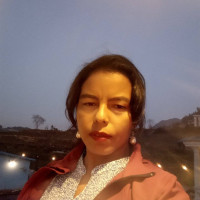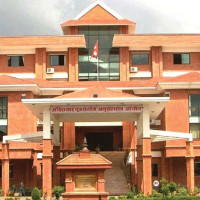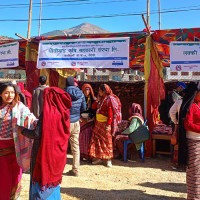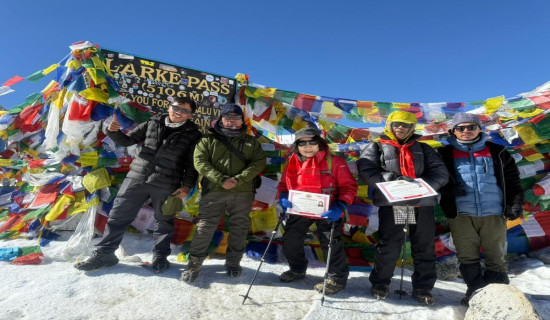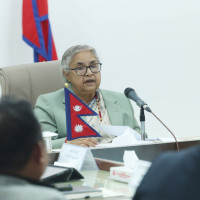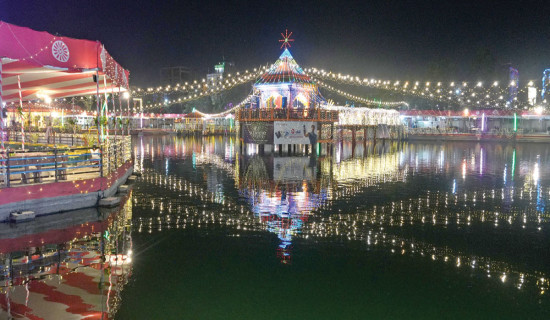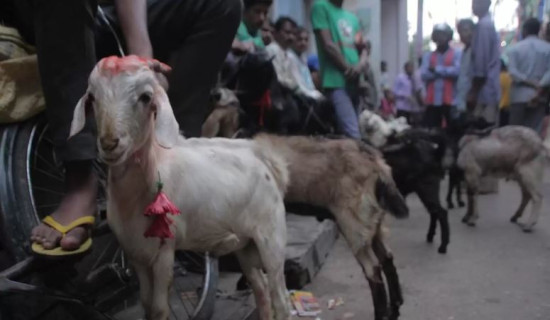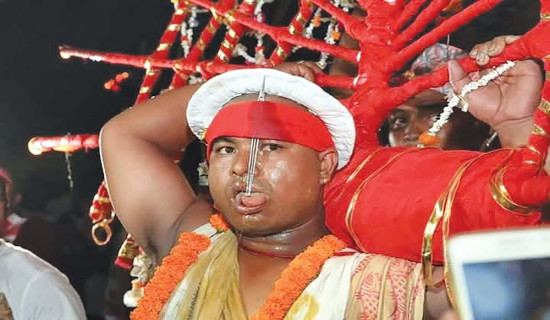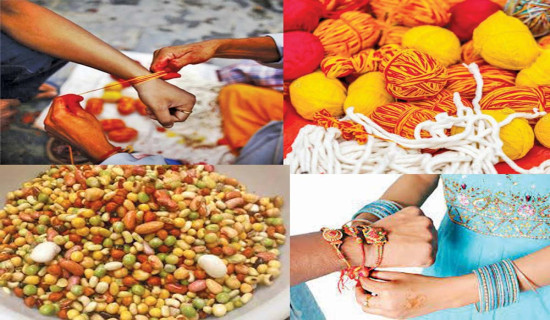- Monday, 15 December 2025
Taleju Bhawani’s necklace awaiting return from Chicago Museum
Kathmandu, June 18: The Taleju Bhawani’s necklace, donated by King Pratap Malla, currently held in the collection of the Art Institute of Chicago (Museum), USA, was the major topic of discussion on the first day of the ongoing International Conference on Recovery of Cultural Heritage, Nepal.
The three-day conference, organised by the Nepal Heritage Recovery Campaign in collaboration with the Department of Archaeology (DoA), started on Monday.
In a presentation titled "Exile in Chicago: Awaiting the Return of Taleju’s Necklace," Saurav Thapa Shrestha stated that despite evidence of its origin and official confirmation, Taleju Bhawani's necklace has not yet been returned to Nepal.
The Department of Archaeology has regularly sent letters to the Art Institute of Chicago via the Ministry of Culture, Tourism and Civil Aviation, the Ministry of Foreign Affairs and the Nepali Embassy.
However, the museum has not responded positively, despite receiving sufficient documentation proving the necklace’s origin, it sent a letter to the DoA raising additional questions.
Shrestha mentioned that the necklace was safely stored in Mulchowk with a separate inventory record after 1790. It was sold to James and Marilynn Alsdorf on June 22, 1976. Later, the Alsdorfs donated the necklace to the Art Institute of Chicago, where it remains until today.
Saubhagya Pradhananga, Director General of the DoA, informed that the Department had submitted all relevant documents regarding the Taleju Bhawani's necklace. “We are still awaiting a response. Everyone wants the necklace to be repatriated to its hometown,” she said.
Providing updates on the repatriation of Nepal’s heritage, Pradhananga noted that a total of 198 stolen artifacts have been brought back to Nepal. Of them, 125 were returned from the United States, 29 from China, 22 from the United Kingdom, 13 from India, five from Australia, and one each from Germany, Austria, Italy, and a European private collection. A total of 39 artifacts have been restored in their original locations.
Despite having submitted proof of origin, several artifacts are yet to be repatriated. These include 30 from private collections in Sweden, 24 from UK auctions, 16 from auctions and museums in France, 15 from Swiss auctions, six from U.S. gallery museums, six from Austria, two from the Victoria BC Gallery in Australia, and one each from China, a private collection in Singapore, Thailand, and three from Belgium.
She further explained that repatriating cultural properties faces numerous legal complexities, primarily due to weak international coordination and ownership disputes, especially for items before the establishment of modern heritage laws.
“Many artifacts cannot be proven to belong to Nepal due to the lack of strong documentation,” she said. “Political and diplomatic hurdles also delay or block the return of heritage objects.”
Nevertheless, she added, some countries and institutions are increasingly cooperating in returning the stolen artifacts. According to Pradhananga, fiscal years 2023/24 and 2024/25 have been especially successful, with a higher number of stolen artifacts bringing back home than in previous years. On March 30, a total of 21 stolen artifacts were repatriated to Kathmandu from the USA.
The three-day conference is discussing issues surrounding stolen cultural artifacts, illegal trafficking and repatriation. The organisers also mentioned that the event aims to explore how the return of such heritage supports justice, healing, and reconciliation for affected communities and nations.
Kanak Mani Dixit, Chairperson of the Nepal Heritage Recovery Campaign, stated that the conference is vital not only to reflect on the history and current status of cultural theft in Nepal but also to strengthen efforts for protection and repatriation.
“At a time when the process of returning stolen statues and artifacts is gaining momentum in Nepal, this conference is essential to understand and communicate what’s happening globally in this context,” he said. “We are pleased to witness the presence of experts, scholars, researchers, and policymakers from around the world working in the field of art and heritage.”


